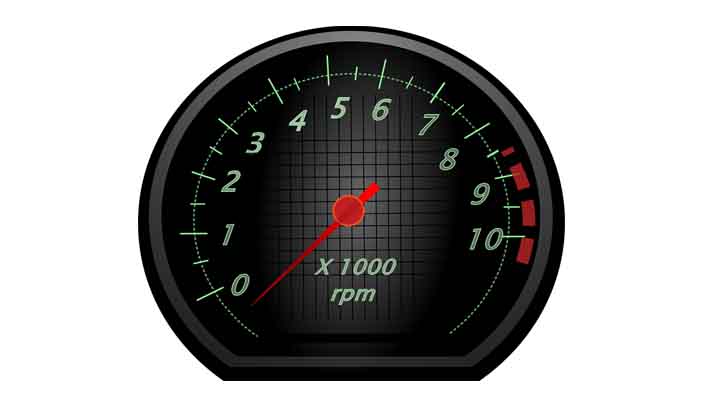Why My Car Has No Power When I Accelerate

The dreaded feeling: foot down, engine roaring (maybe), but your car feels like it's wading through treacle. We've all been there. That gut-wrenching moment when you need to merge onto the highway, overtake a slow-moving vehicle, or simply enjoy a spirited drive, and your car responds with the enthusiasm of a sloth on valium. But why? The reasons for a lack of acceleration are numerous and varied, depending heavily on your car's age, engine type, and technology.
The Usual Suspects: Basics for Everyone
Let's start with the basics that apply to virtually any vehicle, regardless of its technological sophistication.
- Clogged Air Filter: Restricts airflow to the engine, reducing combustion efficiency. Replacing it is cheap and easy.
- Dirty Fuel Filter: Starves the engine of fuel, leading to hesitation and poor acceleration.
- Faulty Spark Plugs (or Coils): Incomplete combustion results in wasted fuel and reduced power.
These are maintenance items that should be checked regularly. Ignoring them is like trying to run a marathon with a stone in your shoe – painful and inefficient.
Modern Marvels (and Modern Headaches): Direct Injection vs. Port Injection
Here's where things get more interesting. Direct injection (DI) and port injection are two different ways to deliver fuel to the engine. DI sprays fuel directly into the cylinder, while port injection sprays it into the intake manifold. Both have pros and cons.
Direct Injection (DI)
Many modern cars use DI for its efficiency and power benefits. Think of something like a 2018 BMW 330i (B48 engine) or a 2020 Mazda 3 (Skyactiv-G). However, DI engines are prone to carbon buildup on the intake valves.
| Feature | Pros | Cons |
|---|---|---|
| Direct Injection | Increased fuel efficiency, more power, cleaner emissions (in some cases) | Carbon buildup on intake valves, potentially requiring costly cleaning, more complex system. |
Driving Impression: Initially, DI cars feel responsive and eager. However, over time, carbon buildup can lead to a noticeable decrease in power, especially at lower RPMs. It feels like the engine is hesitant to rev freely, lacking its initial zest.
Port Injection
Port injection is the older, simpler technology. Think of a 2010 Honda Civic or a 2005 Toyota Corolla. While not as efficient as DI, it's less prone to carbon buildup because the fuel washes the intake valves.
| Feature | Pros | Cons |
|---|---|---|
| Port Injection | Simpler system, less prone to carbon buildup, generally cheaper to maintain | Less fuel-efficient, potentially lower power output |
Driving Impression: Port-injected cars often feel less punchy from the factory. However, they tend to maintain their performance over time, with fewer major maintenance issues related to fuel delivery.
Turbochargers and Superchargers: Forced Induction Frustrations
Forced induction (turbochargers and superchargers) add complexity. A failing turbo or supercharger can drastically reduce power. Symptoms include:
- Whining or Screeching Noises: Indicating bearing failure.
- Loss of Boost: The car feels like it's naturally aspirated (or worse).
- Excessive Oil Consumption: Often a sign of worn turbo seals.
Consider a 2015 Subaru WRX (turbocharged) versus a 2003 Mustang Cobra (supercharged). A WRX with a failing turbo will feel incredibly sluggish, especially above 3000 RPM. The Cobra, with its supercharger, might exhibit a sudden drop in power delivery, accompanied by a worrying rattle.
Automatic Transmissions: Slipping Gears and Lost Potential
An automatic transmission slipping is a major power killer. If the transmission isn't properly engaging gears, the engine's power is simply wasted. Symptoms include:
- High Engine RPMs with Little Acceleration: The engine is revving, but the car isn't going anywhere.
- Jerky or Delayed Shifts: The transmission is struggling to change gears smoothly.
- Unusual Noises: Grinding, whining, or clunking sounds from the transmission.
Compare a 2012 VW GTI (DSG transmission) to a 2008 Honda Accord (traditional automatic). A failing DSG might exhibit harsh, delayed shifts, making the car feel unresponsive. The Accord, with a failing automatic, could simply refuse to shift properly, leaving you stranded or limping along at low speeds.
Sensor Shenanigans: The Electronic Gremlins
Modern cars rely on a complex network of sensors. A faulty sensor can send incorrect information to the engine control unit (ECU), leading to reduced power. Common culprits include:
- Mass Airflow (MAF) Sensor: Measures the amount of air entering the engine.
- Oxygen (O2) Sensor: Monitors exhaust gases to optimize fuel mixture.
- Crankshaft Position Sensor: Tracks the engine's rotation.
Consider a 2016 Ford Focus ST. A faulty MAF sensor could cause the engine to run lean, resulting in hesitation and reduced power, especially under boost. A bad O2 sensor on a 2019 Honda Civic could lead to poor fuel economy and sluggish acceleration.
Final Thoughts: A Powerless Predicament
Diagnosing a lack of acceleration can be challenging. Start with the basics, then consider your car's specific engine and technology. Don't be afraid to consult a qualified mechanic – they have the tools and expertise to pinpoint the problem. Remember to consider the car's service history and any recent repairs that might be related.
Now, for the debate-sparking question: Which is worse – the feeling of a naturally aspirated engine slowly losing power over time due to neglect, or the sudden, devastating loss of boost from a failing turbocharger? Let the arguments begin!
